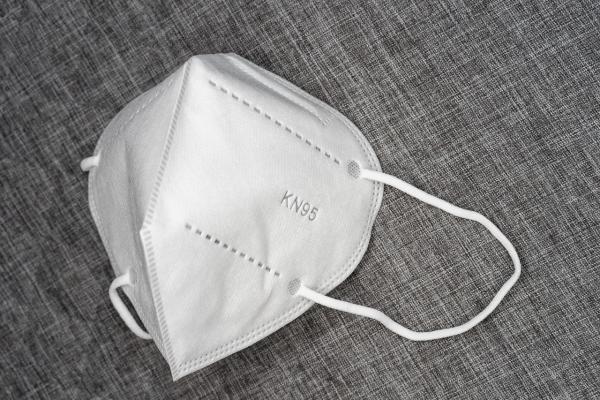Virtually all infectious disease experts and epidemiologists would unhesitatingly agree with the headline of this article, and yet there are some armchair experts who demur. They seem not to grasp the maxim, “The absence of evidence is not evidence of absence.” In other words, the fact that there are no “placebo” controlled trials of the effectiveness of parachutes for people jumping out of airplanes from 10,000 feet is not evidence that they don’t work.
And yet, it’s remarkable how many people fall into that trap. Recent, high-profile examples include awful, angry articles about a meta-analysis performed by the Cochrane Library of the effectiveness of masks. According to journalist John Tierney, it found that wearing masks doesn’t prevent respiratory diseases. His article concludes:
This verdict ought to be the death knell for mask mandates, but that would require the Centers for Disease Control (CDC) and the rest of the public-health establishment to forsake ‘the science’ — and unfortunately, these leaders and their acolytes in the media seem as determined as ever to ignore actual science.
Let’s talk about who’s actually ignoring the science. Beginning with the headline and subhed and extending to the quotation above from his article, Tierney distorts the findings of the Cochrane analysis.
Here are his headline and subhed:
Approximately Zero
Masks make no difference in reducing the spread of COVID, according to an extensive new review by Cochrane – the gold standard for evaluating health interventions
New York Times' columnist Bret Stephens jumped on the same out-of-kilter bandwagon in a column based on the Cochrane study and headlined, “The Mask Mandates Did Nothing. Will Any Lessons Be Learned?” His thesis: “Those skeptics who were furiously mocked as cranks and occasionally censored as ‘misinformers’ for opposing mandates were right. The mainstream experts and pundits who supported mandates were wrong.”
Stephens quotes this dialogue between himself and Tom Jefferson, the mask-skeptical lead author of the Cochrane analysis:
“There is just no evidence that they” — masks — “make any difference,” [Jefferson] told the journalist Maryanne Demasi. “Full stop.”
But, wait, hold on. What about N-95 masks, as opposed to lower-quality surgical or cloth masks?
“Makes no difference — none of it,” said Jefferson.
Stephens goes further, asking Jefferson, "What about the utility of masks in conjunction with other preventive measures, such as hand hygiene, physical distancing or air filtration?" Jefferson's confident response: "There’s no evidence that many of these things make any difference.” How, exactly, does Jefferson think respiratory diseases spread?
One wonders whether Tierney and Stephens actually read the Cochrane report, which was based on 78 selected studies, only six of which involved the COVID pandemic and only two of those studied specifically studied COVID and mask mandates. (And those two were only concerned with whether mask mandates were in place but not actually the wearing of masks.)
Moreover, the Cochrane report itself identified these two statements as the “key messages” of their analysis: “We are uncertain whether wearing masks or N95/P2 respirators helps to slow the spread of respiratory viruses based on the studies we assessed,” and “[h]and hygiene programs may help to slow the spread of respiratory viruses.”
Expanding on those summary statements, here are the first four sentences of the Cochrane authors’ conclusions (emphasis added):
The high risk of bias in the trials, variation in outcome measurement, and relatively low adherence with the interventions during the studies hampers drawing firm conclusions. There were additional RCTs [randomized, controlled trials] during the pandemic related to physical interventions but a relative paucity given the importance of the question of masking and its relative effectiveness and the concomitant measures of mask adherence which would be highly relevant to the measurement of effectiveness, especially in the elderly and in young children.
There is uncertainty about the effects of face masks. The low to moderate certainty of evidence means our confidence in the effect estimate is limited, and that the true effect may be different from the observed estimate of the effect.
Moreover, in the authors’ discussion of their findings concerning the effectiveness of the highest quality, most effective masks – N95/P2 respirators – there is no mention at all of COVID specifically:
N95/P2 respirators
Four studies were in health care workers, and one small study was in the community. Compared with wearing medical or surgical masks, wearing N95/P2 respirators probably makes little to no difference in how many people have confirmed flu (5 studies; 8,407 people); and may make little to no difference in how many people catch a flu-like illness (5 studies; 8,407 people), or respiratory illness (3 studies; 7,799 people).
Jefferson, the "expert" Stephens relies on so extensively, really needs to refresh his memory about what the Cochrane report actually says.
Officials at Cochrane are now clarifying the results of their analysis -- specifically, admitting that the way it summarized the review was unclear and imprecise, and that the way some people interpreted it was wrong. This is from a March 10 column in the New York Times, headlined "Here’s Why the Science Is Clear That Masks Work":
Many commentators have claimed that a recently updated Cochrane review shows that ‘masks don’t work,’ which is an inaccurate and misleading interpretation,” Karla Soares-Weiser, the editor in chief of the Cochrane Library, said in a statement.
“The review examined whether interventions to promote mask wearing help to slow the spread of respiratory viruses,” Soares-Weiser said, adding, “Given the limitations in the primary evidence, the review is not able to address the question of whether mask wearing itself reduces people’s risk of contracting or spreading respiratory viruses.”
She said that “this wording was open to misinterpretation, for which we apologize,” and that Cochrane would revise the summary.
Soares-Weiser also said, though, that one of the lead authors of the review even more seriously misinterpreted its finding on masks by saying in an interview that it proved “there is just no evidence that they make any difference.” In fact, Soares-Weiser said, “that statement is not an accurate representation of what the review found.”
That makes it pretty clear who the real cranks and misinformers are. Tierney and Stephens owe their readers an apology, and Jefferson deserves a pink slip.
Michael Osterholm, the director of the Center for Infectious Disease Research and Policy (CIDRAP) and Regents Professor at the University of Minnesota, and his colleagues provide a scholarly, two-part discussion of the nuances of wearing masks to prevent respiratory infections (here and here).
Perhaps the most persuasive evidence is found in the table below that illustrates the degree of protection against an aerosol afforded by different types of masks when worn by both source and receiver. It demonstrates that “an N95 FFR [filtering faceplate respirator, such as an N95], even if not fit-tested, offers more benefits as both source control and personal protection than any mask,” as measured by the time it takes until] an infectious dose is received:

But there’s more. Much more.
As Drs. Katelyn Jetelina and Kristen Panthagani point out in an excellent article on the ability of masks to prevent the transmission of viral respiratory diseases:
Viral transmission in a population is exponential. Even if masks only reduce the risk of transmission for each individual by a small fraction, when a community masks, those small effects compound exponentially across a population, making a big dent in cases. Just like compounding interest — a small change in the percentage makes a big difference down the road.
Those observations (and the table above) provide what might be called the theoretical basis for predicting the effectiveness of masks, but the authors go on to provide actual real-world evidence of protection against COVID:
- Mask wearing corresponded to a 19% decrease in the R(0) in one study. In other words, masks helped reduce transmission.
- In Bangladesh villages were randomized to be provided free masks. Villages that got the intervention had more than double the mask usage than villages that didn’t (13% vs. 42%). This resulted in a 9% reduction in cases in the mask-wearing villages.
- In the U.S., a 10% increase in mask wearing was associated with greater control of transmission.
- In Germany, mask mandates reduced spread by 45%.
Finally, they discuss the palpable weaknesses of the Cochrane meta-analysis so beloved by Tierney and Stephens, including:
- The trials in the Cochrane analysis “had a number of problems and, given the limited number of RCTs [randomized controlled trials] on COVID-19, do not represent the totality of evidence.”
- The Cochrane analysis encompassed trials with different viruses: “When a virus is less contagious, an effect is harder to detect. Many of the RCTs evaluated influenza, which is far less contagious than COVID-19. This means that if we combine them, the impact of masks may be underestimated. (Another scientist, separate from this review, removed the flu studies and reran the meta-analysis. He found masks protected against SARS-CoV-2.)
- The Cochrane analysis combined studies performed in widely disparate settings. “Studies ranged from suburban schools to hospital wards in high‐income countries, crowded inner city settings in low‐income countries, and an immigrant neighborhood in a high‐income country.”
There’s much more that Jetelina and Panthagani could have added, including the CDC’s compilation of studies of mask efficacy, which shows that most have found positive effects from masking. Among them is a study of an outbreak aboard the aircraft carrier U.S.S. Theodore Roosevelt, where sailors lived and worked in close quarters, where masks produced a 70% reduced risk of infection.
Another study of 33,000 pupils in eight school districts in Massachusetts found an infection rate of 11.7% for unmasked compared to 1.7% for masked children.
Also in Massachusetts, a study compared the numbers of COVID infections between school districts where compulsory masking requirements were lifted with those where they were maintained. Before the statewide masking policy was rescinded, the trends in the incidence of COVID in the Boston and Chelsea districts -- which retained masking requirements -- were similar to the trends in school districts that later lifted masking requirements. However, the researchers found that "after the statewide masking policy was rescinded, the trends in the incidence of Covid-19 diverged, with a substantially higher incidence observed in school districts that lifted masking requirements than in school districts that sustained masking requirements."
I could go on, but I will leave it to readers to judge (1) the efficacy of masks, and (2) the veracity of Tierney and Stephens.
The bottom line: Don’t take everything you read – especially ideological journalists’ accounts of scientific or medical articles – at face value. Be circumspect about which interpretations you accept, whose advice you take, and whether there exists a consensus among experts.
Note: An earlier, abbreviated version of this article was published on Issues & Insights.




